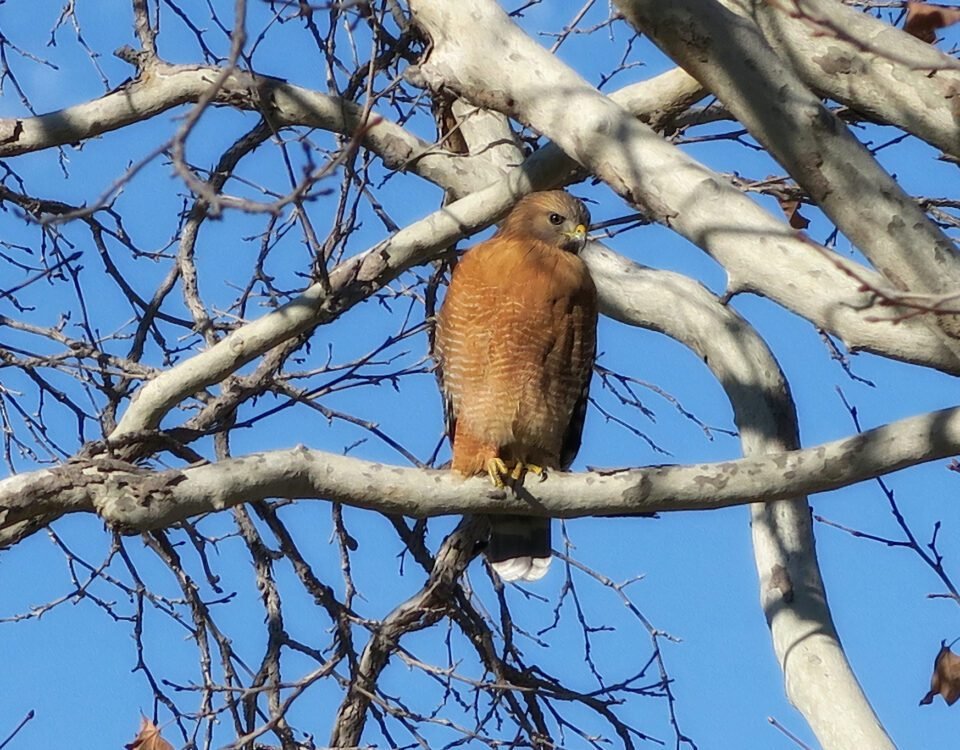Raindrops patter on leaves, clouds blanket the sky, and many animals retreat to their shelters/birdhouses. Yet amid the rainy day, one marvel of nature defies the norm—the hummingbird.
While numerous birds view rain as a signal to tone down, these agile fliers seem revitalized, zipping between raindrops as they continue their nectar-fueled aerial ballet. But what drives these little powerhouses to stay active when the rest of the animal kingdom takes a rain check? Let’s explore why hummingbirds are more active in the rain and what makes them fly high and easily even while being soaked.
Recommended Reading: Why Won’t My Bird Play with Toys? The Unusual Truth
Why Are Hummingbirds More Active In The Rain? Why Do They Fly?
Hummingbirds are more active in the rain primarily because rainwater washes away some natural predators and irritants like ants and bees. This allows hummingbirds to feed more freely from flowers and feeders. Because hummingbirds require frequent feeding—approximately every 15 minutes, they continue their foraging activities during rain.

Why Are Hummingbirds More Active In The Rain?
While many animals take cover during rainfall, hummingbirds seize this opportunity to forage with fewer interruptions. Rain is a natural deterrent, warding off ants, bees, and competitors that typically invade flowers and feeders. With these irritants temporarily out of the picture, hummingbirds can feed in peace.
Moreover, rain often rejuvenates nectar in flowers, making it a fresher and more abundant food source. Since hummingbirds have extremely high metabolic rates and need to feed frequently to sustain their energy levels, these rainy conditions provide an optimal setting to meet their nutritional needs with less competition and more bountiful resources.
Editor’s Pick: What To Do When Your Bird Bites You? A Complete Guide
Can Hummingbirds Fly In Heavy Rainfall?
While these birds are remarkably water-resistant and skilled in flight, their small size makes heavy rain challenging. To cope with substantial rainfall, they would need to fly quickly, engage in swift body shakes, and manage the added burden of heavy rain droplets—a weight that might be difficult to bear.
As a result, they often opt to take refuge until the rainfall becomes lighter. Typically, they find shelter in thick foliage, positioning themselves on the downwind side of a tree trunk for added protection. Their strong feet enable them to hold tightly onto a branch, ensuring the wind doesn’t sweep them away.

Hummingbirds on Tree
Moreover, hummingbirds often preen during rainfall to maintain their feathers. Using their beaks, they eliminate debris and parasites while smoothing any irregularities in their wing feathers. This grooming ensures optimal feather performance during flight. Additionally, they use their feet to clean the rear of their head and neck area.
While hummingbirds are fond of water, they don’t particularly enjoy flying in the rain. This behavior is primarily driven by the need for survival rather than preference.
How Do Hummingbirds Actively Fly In The Rain?
If you observe hummingbirds, you’ll quickly notice that these energetic fliers are almost constantly moving. Given their insatiable appetite, they don’t have the luxury of pausing their activities, even when weather conditions are less than ideal.
During rainfall, they often continue to forage and fly as if the raindrops barely affect them. Do they prefer rain? Probably not, considering they choose feeders with overhead shelter when given the option. However, their resilience in rainy conditions can be attributed to several remarkable characteristics.
Feathers and Natural Oils
Unlike other birds with waterproofing elements in their feathers, hummingbirds rely on the design of their plumage and the natural oils or waxes they apply during preening to repel water. But not just their feathers allow them to manage in the rain.

Humming Feathers and Natural Oils
Quick ‘Shake-Off’ Mechanism
Researchers have discovered that hummingbirds possess the incredible ability to shake off water in just 0.1 seconds, whether they are flying or perched. Almost all the water is expelled from their feathers during this rapid shaking.
Imagine shaking your head quickly without losing your sense of direction—this is what they manage to do, all while maintaining flight.
Adaptive Flight Patterns
Studies involving hummingbirds in various rain conditions reveal that they adapt their flight kinematics based on the intensity of the rainfall.
In light rain, they make minimal or no adjustments to their body position or flight patterns. However, heavy rain necessitates body position and wing speed changes to maintain stability.
The trade-off is that these adaptations demand significantly more energy from the birds, adding another layer of complexity to their rain-soaked aerial feats.
What Makes A Hummingbird’s Flight Different From Other Birds?
The flight mechanics of hummingbirds are a marvel in the avian world, setting them apart from other bird species in various ways. What makes their flight so unique? The answer lies in their specialized physiology, which has evolved to support their demanding lifestyle.
- Size and Weight: Their small and light weight give them unparalleled agility in the air, making them exceptionally elegant fliers.
- Skeletal Structure: Hummingbirds have hollow bones, fused vertebrae, and fused pelvic bones. This structure minimizes the necessary muscle and ligament mass, leaving just enough to support and protect their internal organs.
- Musculature: One of the most striking differences is their musculature; their pectoral or chest muscles constitute over 25% of their body weight. This is significantly more than other birds and allows for powerful wing movements.
- Limited Ground Mobility: Their tiny feet contribute to their lightweight build but come with the trade-off of limited walking ability. Instead, they’re adept at perching and can even scoot sideways.
- Wing Bones: Longer and more robust bones at the wingtips give them better stability and control during flight, enabling maneuvers beyond other birds’ capabilities.
- Cardiac Capacity: They have a larger heart relative to body size, facilitating their high-octane flying by circulating more oxygen throughout their system.
These physiological traits equip them with exceptional flight capabilities, enabling them to navigate and survive in diverse and often challenging environments.
Do Raindrops Hurt The Hummingbirds?
Hummingbirds are well-adapted to dealing with rain, not just by avoiding it but also by minimizing the impact of any raindrops that do make contact. When struck by a raindrop, a hummingbird can alter its flight path to move in sync with the falling water, effectively reducing the force of the impact.

Do Raindrops Hurt The Hummingbirds?
Furthermore, while the terminal velocity of raindrops might be enough to shake them slightly in the air, it’s generally not forceful enough to send a hummingbird plummeting to the ground or colliding with a solid object in a way that would cause injury.
Also Read: How to Actually Become a Bird Breeder: A-Z Guide
How Do Hummingbirds Survive The Cold During Rain?
A hummingbird’s ability to adapt to chilly conditions can be attributed to several fascinating survival strategies:
Feather Insulation
Hummingbirds use their feathers as insulation against the cold. With a body temperature around 105 degrees Fahrenheit, fluffing up their feathers helps trap this warmth, creating an insulating layer that shields them from the colder external air. This is why you might sometimes observe them looking plump and fluffy.
Torpor State
Another survival tactic hummingbirds use is entering a state known as torpor to conserve energy. In both winter and rainy conditions, they significantly lower their body temperature and heart rate, often by nearly 50 degrees Fahrenheit.
During this period, you might see them hanging upside-down from a branch or feeder, appearing lifeless. They are in a deep state of rest, preserving their vital energy.
Shivering to Warm Up
Upon waking from torpor or facing a cold morning, hummingbirds engage in shivering to activate their muscles and raise their body temperature quickly.
It typically takes about an hour to restore their temperature to its average level. Because they expend stored energy to warm themselves, they often set out immediately afterward to find food and replenish their energy reserves.

Final Thoughts
The next time you find yourself indoors, listening to the soothing sound of raindrops hitting the window, take a moment to look outside for hummingbirds bouncing through the rain.
Armed with your newfound knowledge of how these remarkable birds handle inclement weather, you can watch their aerial acrobatics with awe rather than concern for their well-being.
If you’d like to lend these resilient fliers a helping hand, consider refilling your hummingbird feeders once the storm has passed. Ensure the nozzles are clean and unobstructed, as flying in the rain demands significantly more energy.
Your feathered visitors will undoubtedly appreciate the easy access to nourishment as they replenish their energy reserves.





